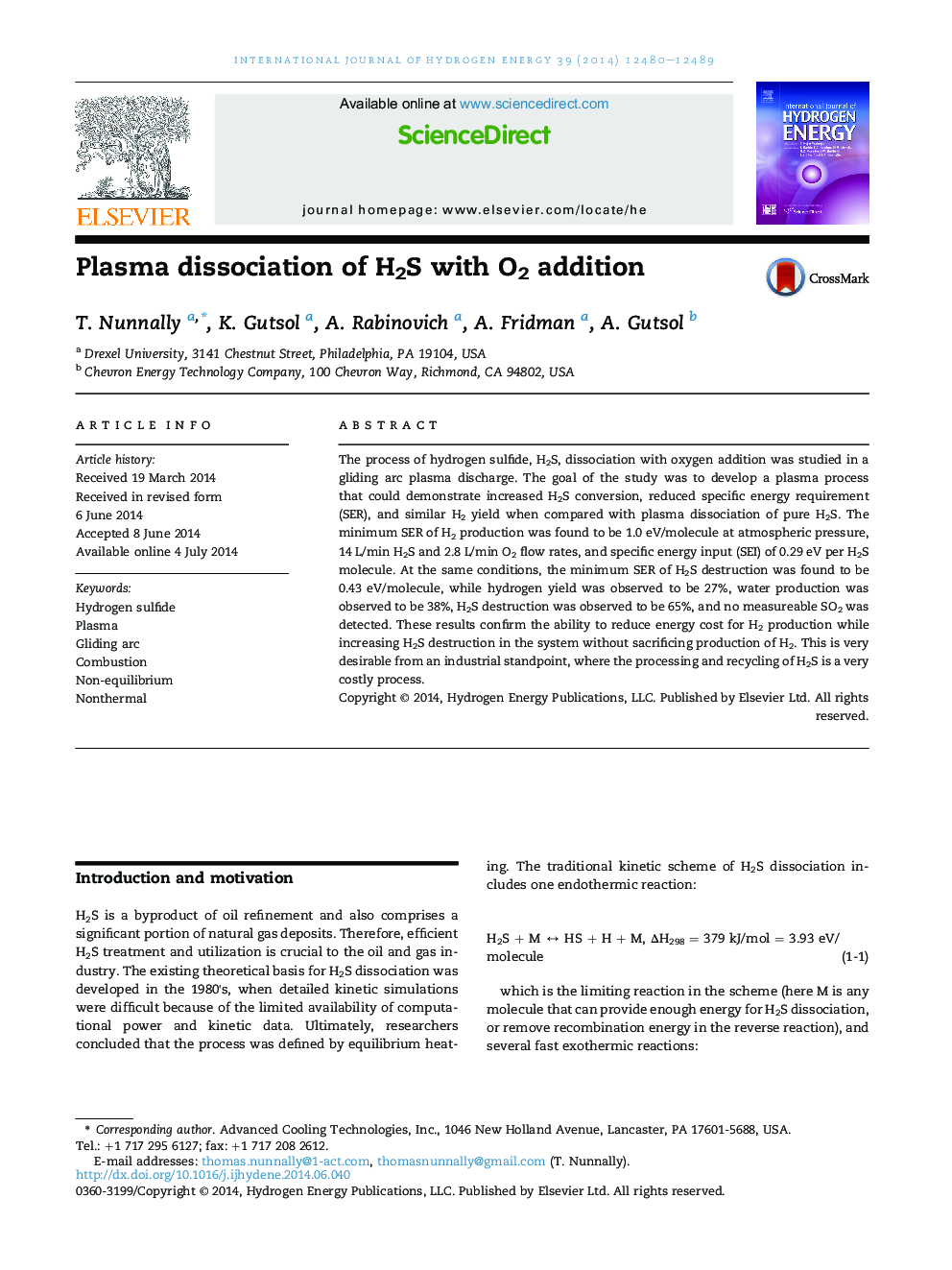| Article ID | Journal | Published Year | Pages | File Type |
|---|---|---|---|---|
| 7718183 | International Journal of Hydrogen Energy | 2014 | 10 Pages |
Abstract
The process of hydrogen sulfide, H2S, dissociation with oxygen addition was studied in a gliding arc plasma discharge. The goal of the study was to develop a plasma process that could demonstrate increased H2S conversion, reduced specific energy requirement (SER), and similar H2 yield when compared with plasma dissociation of pure H2S. The minimum SER of H2 production was found to be 1.0 eV/molecule at atmospheric pressure, 14 L/min H2S and 2.8 L/min O2 flow rates, and specific energy input (SEI) of 0.29 eV per H2S molecule. At the same conditions, the minimum SER of H2S destruction was found to be 0.43 eV/molecule, while hydrogen yield was observed to be 27%, water production was observed to be 38%, H2S destruction was observed to be 65%, and no measureable SO2 was detected. These results confirm the ability to reduce energy cost for H2 production while increasing H2S destruction in the system without sacrificing production of H2. This is very desirable from an industrial standpoint, where the processing and recycling of H2S is a very costly process.
Related Topics
Physical Sciences and Engineering
Chemistry
Electrochemistry
Authors
T. Nunnally, K. Gutsol, A. Rabinovich, A. Fridman, A. Gutsol,
